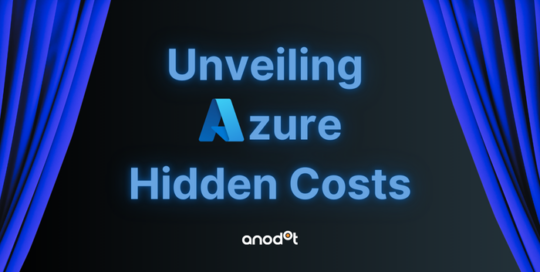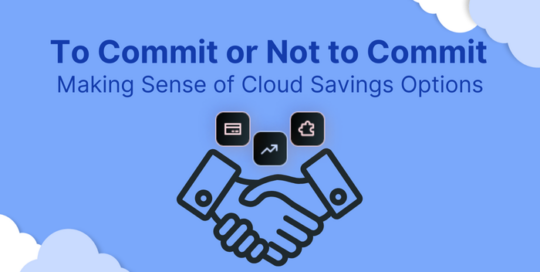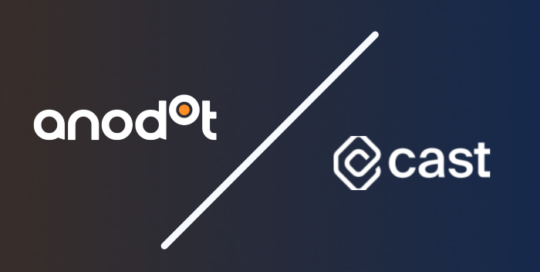We’ve all been hearing about Amazon Bedrock – and the exclusive few who could access the full scope of AWS’ new product. But what exactly is AWS Bedrock? What can it help you accomplish? And, most importantly, when can you get full access to it?
Learn all you need to know about AWS’ new tool from our cloud experts.
In this article:
- What is AWS Bedrock?
- What can AWS Bedrock do?
- How does Amazon Bedrock work?
- How much does AWS Bedrock cost?
- Who can use Amazon Bedrock?
- How to manage your AWS Bedrock spend
What is AWS Bedrock?
Amazon Bedrock will be your next go-to tool for building generative AI applications in AWS. Developers can use the tools to make applications like ChatGPT and other gen AI programs. In other words, it enables you to create a tool that can generate anything from copy to images to even music.
We’ll explain how AWS Bedrock does this below, but for now, know that this tool gives developers full access to customizable foundational models.
The best part? You don’t need to worry about building independent infrastructures or training the AI. You can use your pre-existing AWS cloud environment for that.
AWS Bedrock vs AWS Sagemaker
Let’s clarify one thing: though AWS Bedrock and AWS Sagemaker might both handle AI, they are two very different tools.
Amazon Bedrock is ideal for creating and generating AI applications that help with everything from content creation to security and privacy. Amazon SageMaker is designed to develop, train, and deploy machine learning models, such as debuggers, profilers, and notebooks.
These two AWS products can be used in tandem to develop machine learning (ML) and generative AI applications. However, Amazon Bedrock was made with developers in mind, with pay-as-you-go pricing and pre-trained models to help you get started. SageMaker was made for data scientists and ML engineers, allowing full creative access to customize models as needed.
Amazon Bedrock vs Microsoft vs Google
Amazon Bedrock might be the newest developer tool on the market, but how does it compare to the other generative AI tool powerhouses? AWS isn’t the only company developing generative AI tools like this. Microsoft has Azure OpenAI, and though Google doesn’t have an exact 1:1 competitor, it is working on a similar option called Google Vertex AI.
But what are the differences between these tools?
Azure OpenAI is more accessible than Bedrock. It supports more regions and languages but is limited in creation compared to Bedrock.
Google Vertex AI lets you build custom models, providing the most freedom with features like deploying from an on-premise or hybrid environment, not just from the cloud. However, the learning curve might be higher than that of another alternative because of that added freedom and lack of managed service.
Amazon Bedrock offers managed services, so you’ll have much more support to build and grow. Plus, you’ll get access to Amazon’s still-growing AI model, Titan. The tool also offers features that can help you save money on computing and reduce overall workloads, making AWS more cost-effective in the long run.
What can AWS Bedrock do?
Amazon Bedrock allows developers to create a wide range of generative AI tools. Here are a few common examples:
- Chatbots. Like ChatGPT and Bard, developers can create a conversational bot or your next virtual assistant.
- Content simplification. Like Google’s Search Generative Experience, you can also create an AI that condenses data sets and essays into easy-to-understand paragraphs.
- Text generation. As mentioned above, Amazon Bedrock can be your go-to for copy and content generation, helping you get started with anything from blogs to emails.
- Image generation. You can also use AWS Bedrock to create images for said blogs or even for marketing campaigns or branding.
- Personalization recommendations. Improve your user recommendations by feeding customer personas into Amazon Bedrock to ensure your offer aligns with your customers’ needs.

Melissa Abecasis
Director of Customer Success & Sr. Cloud FinOps Engineer, Anodot
Melissa brings a wealth of experience in customer success, cloud financial operations, and program management, with a demonstrated work history in the Information Technology and healthcare industry.
TIPS FROM THE EXPERT
1. Use minimal compute during early prototyping
Keep compute costs low by starting with basic model configurations for initial testing. This lets you refine your model without high compute costs until you’re ready to scale with more complex configurations.
2. Leverage cost management tools for real-time insights
Track your Bedrock spend and usage in real time with a cloud cost management tool that flags cost spikes. This allows you to respond quickly to anomalies and adjust usage if needed to stay within budget.
3.Combine with AWS SageMaker for tailored customization
If you need high customization, consider using SageMaker in tandem with Bedrock. SageMaker’s fine-tuning features enable deeper customization, reducing reliance on more costly Bedrock model modifications.
4. Utilize managed services for security and compliance
Integrate AWS managed security services to simplify compliance and security monitoring for Bedrock applications. This reduces the resources needed for security management, helping to minimize risk and administrative overhead.
5. Choose the right plan based on usage patterns
Opt for the on-demand plan if usage is irregular; otherwise, consider provisioned throughput for more consistent monthly billing, which often ends up being more cost-effective for steady workloads.
How does Amazon Bedrock work?
AWS Bedrock enables your developers to create powerful generative AI tools by allowing your team access to already-established large language models (LLMs) from companies like Anthropic, Stability AI, and more. Developers can add their flare by attaching custom code to an established foundation model. Deployment will always take place in AWS’ cloud environment.
But what exactly is a foundation model? A foundation model is a tool that can understand natural language requests for generating new text or images. Still, a developer shouldn’t replace it, as it cannot complete complex tasks without human guidance.
Amazon Bedrock provides foundational models developers can use to build applications such as chatbots or content generators. To leverage Bedrock effectively, developers can connect these foundation models with specific data sets or fine-tune them for tasks relevant to your organization.
How much does AWS Bedrock cost?
Amazon Bedrock charges you for model interference and customization, which makes projecting your AWS budget a bit tricky.
You can either pay for these services with:
- On-demand plan, which is a pay-as-you-go plan. This means you can avoid long-term commitments, though you’ll be eating steeper costs.
- Provisioned Throughput plan that ensures you’ll have the same monthly bill but will want to meet specific performance thresholds to ensure you aren’t wasting money.
AWS Bedrock pricing varies depending on:
- The foundation you use to build your generative AI.
- The assets you choose to generate. Images will cost more than copy, for example.
- Model customization can also inflate your price depending on how many tokens you use and how much model storage you need.
Who can use Amazon Bedrock?
AWS Bedrock was released for the general public in September 2023, so anyone can use it now! Companies like have already started migrating from OpenAI and have seen a 30% classification improvement.
In other words, you don’t even necessarily need to make room in your budget for AWS Bedrock. If you’re investing in a similar tool and want to see how much you can save, you should take the plunge.
How to manage your AWS Bedrock spend
Amazon Bedrock sounds like an obvious addition to your AWS tool suite, but are you ready for its cost? Sure, you might be able to save big by transitioning from Azure OpenAI to AWS Bedrock, but such migrations are always a risk – and always cost a little more than you might expect.
The good news is that you don’t have to commit to AWS Bedrock’s full cost… you might only have to commit to 70% of that cloud cost. And those hidden migration prices? They don’t need to creep up on you—not if you have a cloud cost management tool.
Tools like Anodot have been designed to help you save big on your annual cloud spend—all by giving you 100% visibility into your cloud spend. And by cloud spend, we mean all of your cloud spend, as in full views and dashboards of your entire multi-cloud environment, with graphs capturing spend down to the hour up to a two-year period.
Why use Anodot? Demystifying cloud costs is our area of expertise, and we’ve created the AI tools you need to address cloud price fluctuations. By partnering with Automat-it, our CostGPT is now enhanced with Amazon Bedrock, proving the perfect aid to identify hidden prices, poor cost monitoring and reporting, all with you asking a simple search about your cloud spend.
Want a proof of concept?
Talk to us to learn how much you can save with Anodot’s tools.





